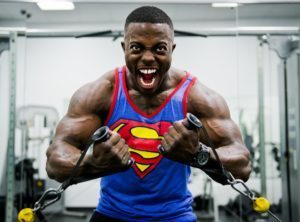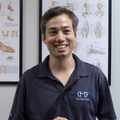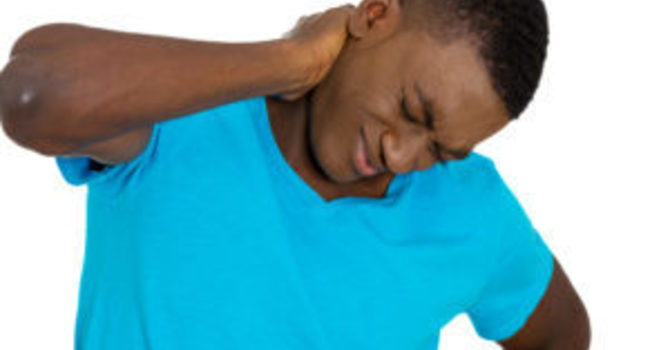
In sport, work, and daily life, pain and injuries occur from the repetition of poor movement patterns, sustained and awkward postures, and overuse more so than from a single traumatic event. Therefore, improving how your body moves and functions can pay dividends by way of injury prevention. But first, you have to be able to see the problem, because you can’t fix what you can’t see!
If I had 1,000 athletes in front of me who needed to be categorized on a continuum from “least likely” to “very likely” to have pain and injury during the upcoming fall sports season, and I could only use a single test to gather data, I would use the squat (in particular the overhead squat) as my one test/screen.
Here’s why: In this theoretical situation, I don’t know which sport each athlete is playing, so I can’t base it on the sport-specific vulnerabilities associated with that sport. Therefore, I don’t know which joints are most likely to be overused, which forces will be applied to the body, or the experience level of the athlete (i.e. recreational, amature, or professional).
If I did, I could really hone in on just looking at the most vulnerable regions associated with the sport, and also decide if the athlete is more or less likely to have a technique problem based on their level of experience. But, I don’t!
My best bet, is the overhead squat test because it captures the most information about the athletes’ ability to mobilize and stabilize their joints from head to toe. The overhead squat tests the functionality of all of these joints:
- foot & ankle
- knees
- hips
- lower back and pelvis
- mid back and upper back
- neck
- shoulders
- elbows
- wrists and hands
It’s no wonder that this is so often the go-to test that I use on my golf, tennis, and crossfit athletes. It’s especially useful if I need a quick, complete assessment of how well someone moves. It’s a valuable “snapshot” that can help me determine where to focus our efforts, in order to improve performance and decrease injury.
Continuing on, I would use the following pass-fail criteria, and those athletes with multiple fails or more apparent mobility/stability fails, would push towards the “very likely” to have pain and injury category.
Pass:
- Your heels remain glued to the ground
- Your feet don’t have to rotate past their starting position
- Your body doesn’t shift right or left
- Your knees track over your toes
- You maintain the bar path over your your midfoot and behind the your knees
- Your head remains level, not looking at your feet and not looking at the ceiling
- You have no pain!
Fail:
- The arches of your feet collapse and your feet have to turn out more than the initial starting position
- Your knees migrate inward towards your mid-line
- Your lower back excessively arches and you flare your ribs out
- Your arms come forward, bringing the bar forward of your knees and ahead of the middle of your foot
- You deviate right or left when coming up or down from the overhead squat
- You can’t keep a neck packed position and instead, jut your chin out, which results in overloading
- If you experience pain anywhere!
Note: If you can’t perform an overhead squat, it means there are gains to be made by improving the way your body moves and functions. The way to improve is not necessarily doing more overhead squats. You can’t fix the alignment of a car by driving more. Take a look at this case study if you’d like to learn more.
If you’re ready to start moving better and feeling better, we’re here to help you on your path.
(561) 318-8070
©CenterForMusculoskeletalFunction2017







